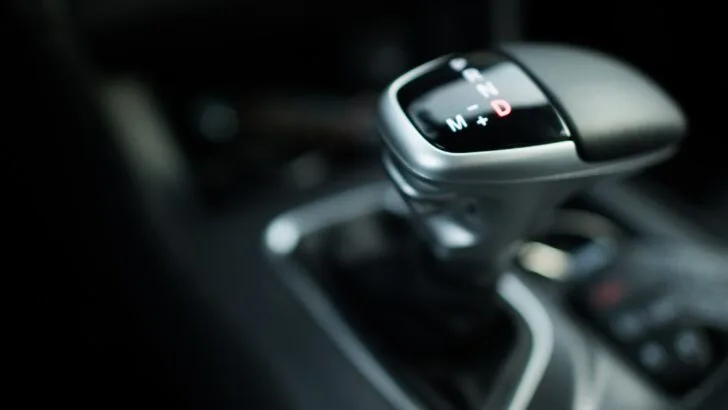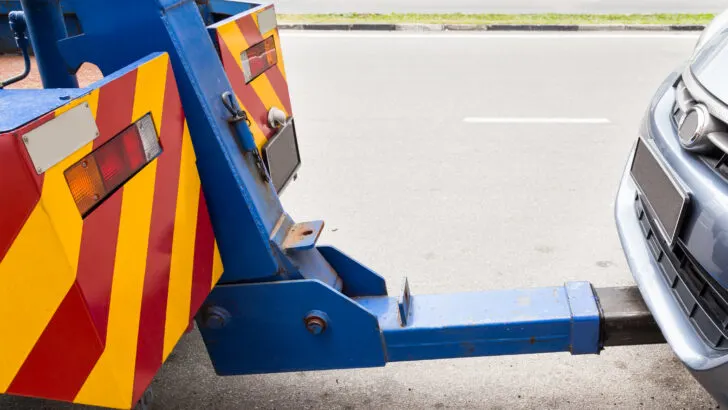Close to 96% of cars on American roads have automatic transmissions. They’re more convenient to drive, especially in the stop-and-go city traffic.
And, it’s come to a time when most manufacturers no longer offer a manual transmission in certain American models.
And, for those who have driven a manual transmission vehicle, you know you can put it in neutral gear (N) and push or pull it for long distances. But what about vehicles with automatic transmissions? Can you move them for 100 miles? What about a few meters?
You can move an automatic transmission car for a few meters, provided that it’s in neutral (N). However, if your automatic transmission vehicle doesn’t have a towing mode, never tow it with the drive wheels on the asphalt.
Read on to find out more!
How to Move An Automatic Car Without Turning It On?
You may have your automatic transmission car on an incline and would like to move it to flat ground for towing.
Other times, you may find that you backed it too close to the wall and would like to move it just a bit to open the trunk.
Regardless of the situation, here are the steps to follow to move your automatic transmission car without turning it on.
Precautionary measures before moving your car:
- First, ask for assistance, as you may find it difficult pushing or stopping the moving car due to its weight and momentum.
- Next, remove any obstacles that are present in your vehicle’s path. It would help if you kept the path clear to prevent any damage to your car and property.
- You’ll then study the inclination of your garage or driveway. We’d recommend moving an automatic car on flat ground as then you’ll still have some control as it moves. Moving a vehicle on a downward slope is dangerous as it may build momentum as it rolls, making it difficult to control, especially if you’re by yourself.
Steps to Follow:
- For this technique to work, you’ll need to have your car’s key fob to enable the vehicle to recognize you.
- Sit in the driver’s seat and avoid stepping on the brake pedal. Stepping on the brake pedal and pressing the start button will start the car, and that’s not what we want at this point.
- Press the start button twice and step on the brake pedal. You’ll see that the light on the start button turns green.
- Next, continue pressing the brake pedal as you shift your car out of Park (P) and into Neutral (N).
- Release the emergency brake, and you will see your car rolling if you’re on an incline. Here, be careful, as your vehicle may not have full brake power without the engine running.
- If you’re on flat ground, ask for assistance to move your car to the desired location if you can’t push it on your own. Also, having a friend or associate with you is essential if something goes wrong and you end up panicking.
- Upon reaching your intended spot, apply the emergency brake and shift into Park (P) to ensure the car doesn’t move further.
- Finally, press the Start button to turn off the car. If you don’t turn it off, you’ll be draining your battery fairly quickly.
Note that you need a working car battery for the above technique to work. The battery doesn’t necessarily need to be strong enough to start the car, but it needs to have some charge.

Can You Push-Start an Automatic Transmission?
As discussed above, you can move your automatic transmission car without starting it. We often encounter the question of whether one can push-start their automatic transmission vehicle.
Unfortunately, you can only push-start a motor vehicle with an internal combustion engine (ICE), mechanical fuel pump and alternator, and a manual transmission.
Automatic transmission vehicles use an open clutch that eliminates the link between the wheels and the engine when the engine is off.
No matter how fast or long you push it, it’ll never start due to differences in operating principles between the two transmissions.
Here’s how to push-start a manual transmission.
- Put your vehicle’s manual transmission in second gear
- Turn the ignition to run/on
- Push the vehicle to speeds of 5 to 10 miles per hour (mph) or more
- Quickly engage the clutch to transfer mechanical torque from the driveshaft to the engine
- Partially depress the gas pedal while the car is still rolling
- Release the clutch pedal quickly to prevent your vehicle from stalling

Can You Tow An Automatic Car Without Turning It On?
You can tow a manual transmission car for hundreds of miles. But what about automatic transmission vehicles?
As discussed above, you can completely isolate the wheels from the engine in a manual transmission by putting it in neutral gear.
Also, as the driving wheels roll, they rotate the gears inside the transmission box to lubricate themselves.
However, we can’t say the same for automatic transmissions as they use an engine-powered pump for lubrication.
As a result, you should never tow an automatic transmission car, even in neutral, while the drive wheels are on the ground and the engine is off.
You’ll be running the gears without lubrication, which can damage the engine too.
Before towing any car, it’s vital that you find out its type of drivetrain, whether it’s manual or automatic, and also the towing capacity.
When towing:
- A front-wheel-drive (FWD) car: Lift the front wheels while leaving the back wheels rolling on the road.
- A rear-wheel-drive (RWD) car: Lift the back wheels while leaving the front wheels rolling on the road.
- A four-wheel-drive (4WD) or all-wheel-drive (AWD) car: None of the four wheels should touch the asphalt. Use a flatbed trailer to prevent damage to its transmission.
Final Thoughts on Moving an Automatic Car Without Turning It On
Remember that automatic transmission vehicles don’t have a lubricant in their transmission and need the engine to rotate and pump oil through.
Apart from the little residue lubricant from the last drive, the gears are usually unlubricated and may get damaged when towing for long distances.
On the brighter side, moving your automatic transmission car for some meters won’t damage its transmission.
When it comes to towing, we’re recommending contacting a towing company to help you with the towing. It’s also important to read the owner’s manual to know your vehicle’s specs before towing.
Some manufacturers have modes that allow towing while all four wheels are on the ground. One example is the Ford Neutral Tow mode.
However, be careful as these towing modes have different conditions you must adhere to for a safe tow.
